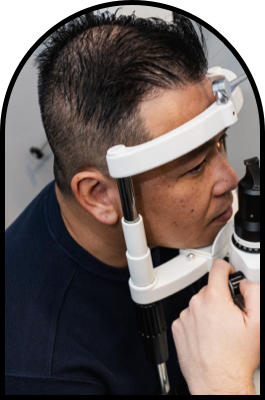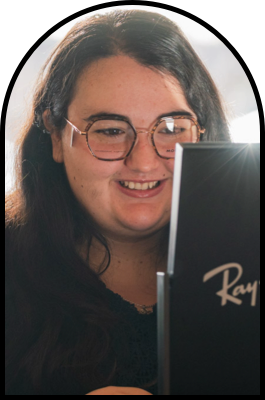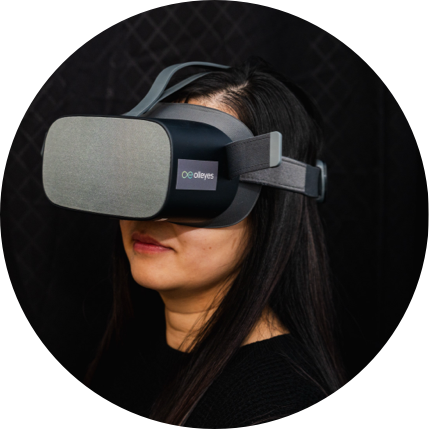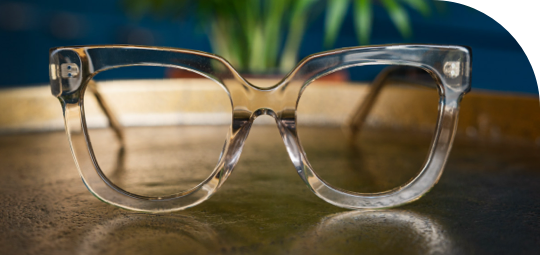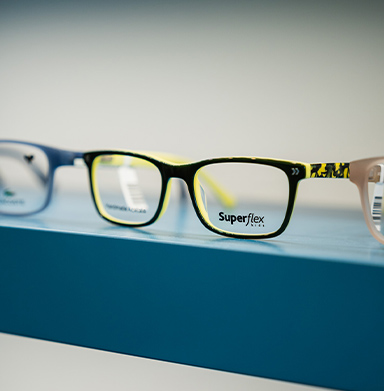Managing Lazy Eye
Lazy eye is an eye condition many people have heard of but may not completely understand. A lazy eye isn’t “lazy,” but weaker than the other eye. This eye condition commonly appears in early childhood but can develop in adults.
Although treating lazy eye in childhood offers the best possible outcome for lifelong healthy vision, there are options for managing lazy eye at any age. Regardless of age, regular eye exams allow your optometrist to monitor eye function so you receive treatment as soon as possible and prevent vision loss.
So, what is lazy eye and what treatments are available? Learn how vision therapy or eye muscle surgery can help restore or improve your vision.
What Causes Lazy Eye?
Lazy eye (amblyopia) is when one eye is weaker than the other. It commonly occurs when there’s a significant difference in eye strength or prescription during the early stages of visual development.
It’s normal to have a dominant or stronger eye, similar to having a dominant hand. However, it can become a problem if the brain ignores visual input from the weaker eye (which is called suppression), increasing over-reliance on the dominant eye. As a result, fewer connections are created between the brain and the weaker or “lazy” eye.
Amblyopia can occur alongside crossed eyes (strabismus), a muscle condition where the eyes don’t align properly with each other. Strabismus commonly causes double vision and eye turn, with the weaker eye turning in, out, up, or down.
Children experience the best treatment results when amblyopia or strabismus are diagnosed and treated before age 6. Unfortunately, about 2–4% of children under 6 have amblyopia, and about 5% have some degree of strabismus.
Lazy eye and crossed eyes in adults is often due to an untreated condition that began in childhood. However, crossed eyes can also occur because of vision loss, disease, or injury, including:
- Diabetes
- Eye or brain tumour
- Graves’ disease
- Muscle & nerve disorders
- Stroke
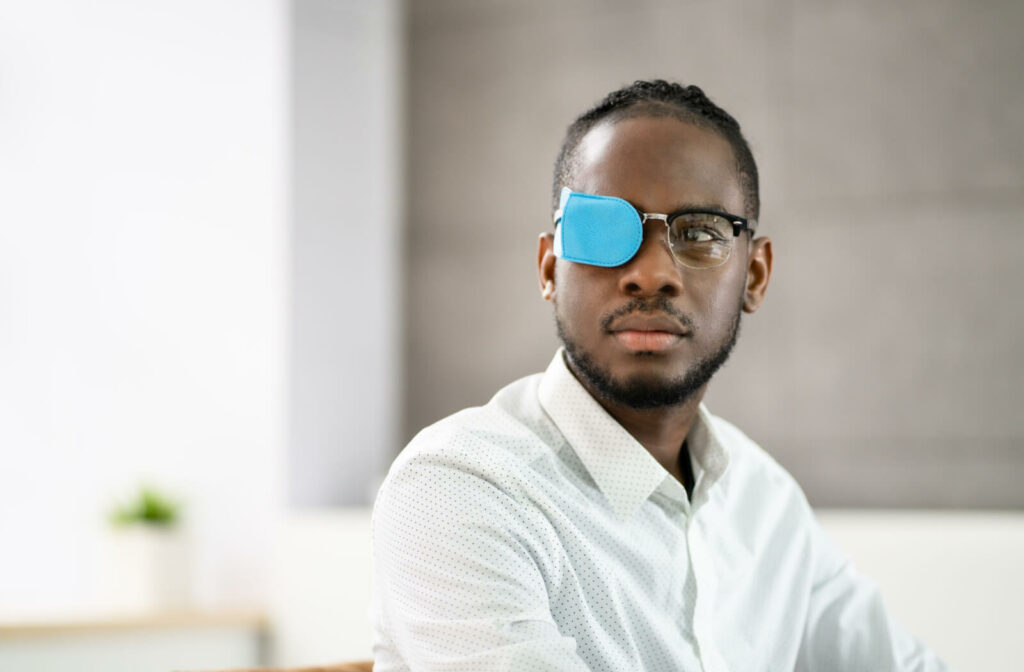
Treatment for Lazy Eye
Children can’t grow out of amblyopia or strabismus. When untreated, amblyopia can lead to significantly reduced vision in the weaker eye. As the condition can worsen progressively without management, it’s crucial to receive treatment as soon as possible.
It’s also more effective to treat the condition during childhood while vision is still developing to prevent potential long-term problems.
Structures of the weaker eye may be physically capable of seeing just as clearly as the dominant eye, so prescription glasses or contact lenses alone may not be enough to correct the condition. Instead, treatment for lazy eye and strabismus focuses on developing eye-brain connections or strengthening eye muscles.
Your optometrist can recommend appropriate treatment depending on your eye health and visual needs. Vision therapy and eye muscle surgery are 2 possible treatment options.
Vision Therapy
Vision therapy includes a variety of noninvasive methods to train your visual system. Many patients with vision-related problems can benefit from vision therapy regardless of age. This treatment empowers patients by strengthening the eyes and visual skills, like binocular vision, eye-teaming, eye focusing, and hand-eye coordination.
Common vision therapy methods for lazy eye use active therapy and may also include:
- Atropine eye drops
- Eye patching (occlusion therapy)
- Prescription glasses or contact lenses
- Prism lenses
Vision therapy can help children feel confident about their vision and give them their best chance for lifelong healthy vision. But vision therapy is also available for adults. So if you’re an adult interested in our visual therapy clinic at Chestermere Optometry, please contact us for an appointment.
Eye Muscle Surgery
Eye muscle surgery may be considered if lazy eye occurs with strabismus, as the eye muscles are causing eye alignment problems that contribute to a weaker eye. Strabismus surgery is effective in 80–90% of cases, and patients typically recover within a few days.
However, surgery is often only one part of the treatment in combination with vision therapy. For example, muscle surgery can improve eye alignment, but vision therapy is necessary to build eye-brain connections.
There are 2 types of strabismus surgery:
- A recession is performed when an eye muscle is too tight. The surgery weakens function by removing a stronger (tighter) muscle section and relocates the muscle to a weaker spot. Moving the tight muscle reduces tension and improves eye alignment.
- A resection/plication is performed when the muscle is too weak or loose. Surgery shortens the muscle and reattaches it in the same spot to make the muscle tighter. The improved tightness supports muscle strength and eye alignment.
Talk to Your Optometrist
There’s no hard rule about when it’s too late to treat lazy eye. Your optometrist can assess your or your child’s eye health to determine the appropriate treatment for preserving vision. Blindness caused by lazy eye (amblyopia) can be irreversible, and there are options for improving poor vision.
If you have concerns about your vision, contact our team at Chestermere Optometry. Our focus on holistic eye care ensures we consider your and your family’s health and lifestyle.
Book an appointment today to learn more about vision therapy, eye muscle surgery, and vision care options tailored to your family’s needs.





